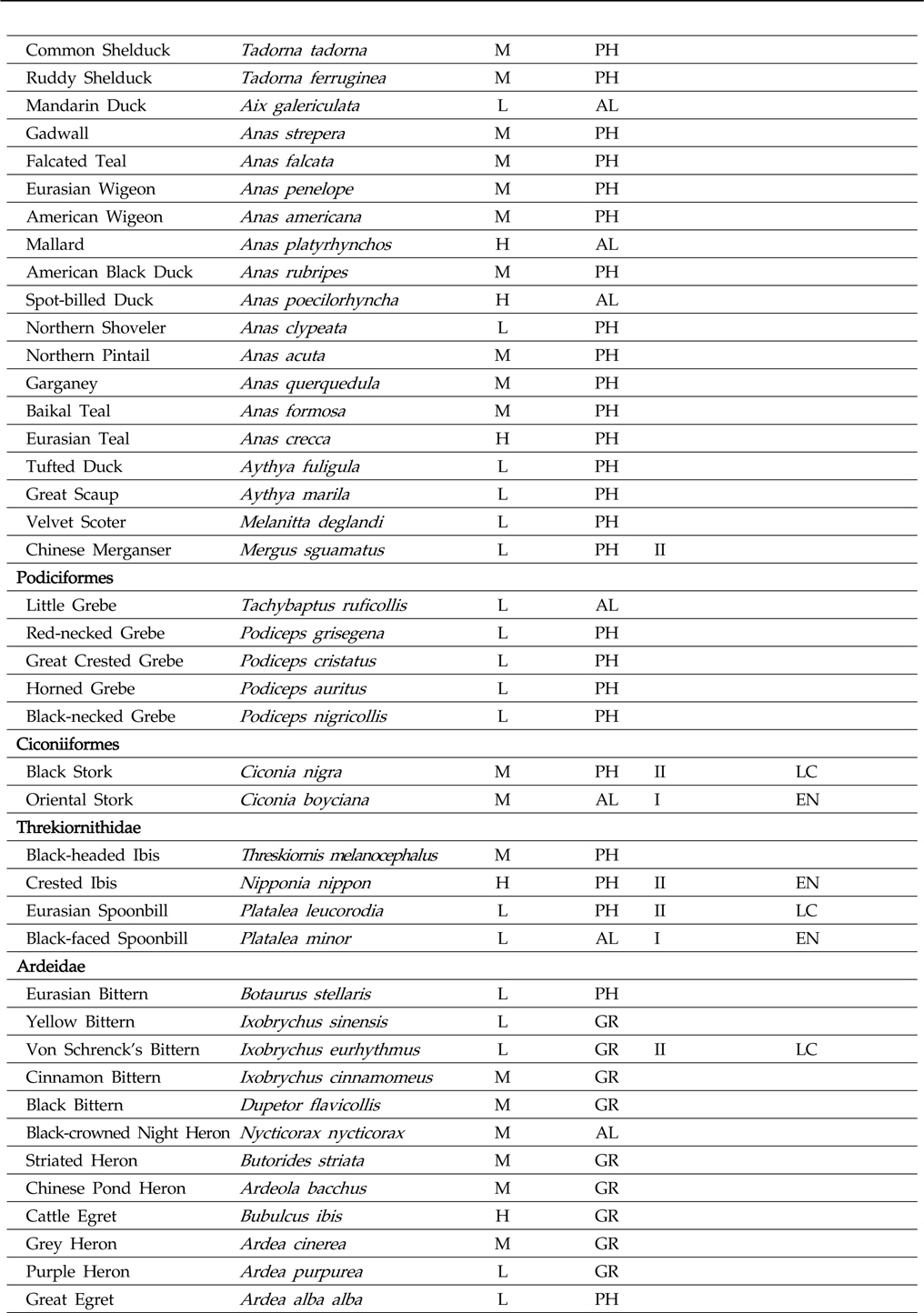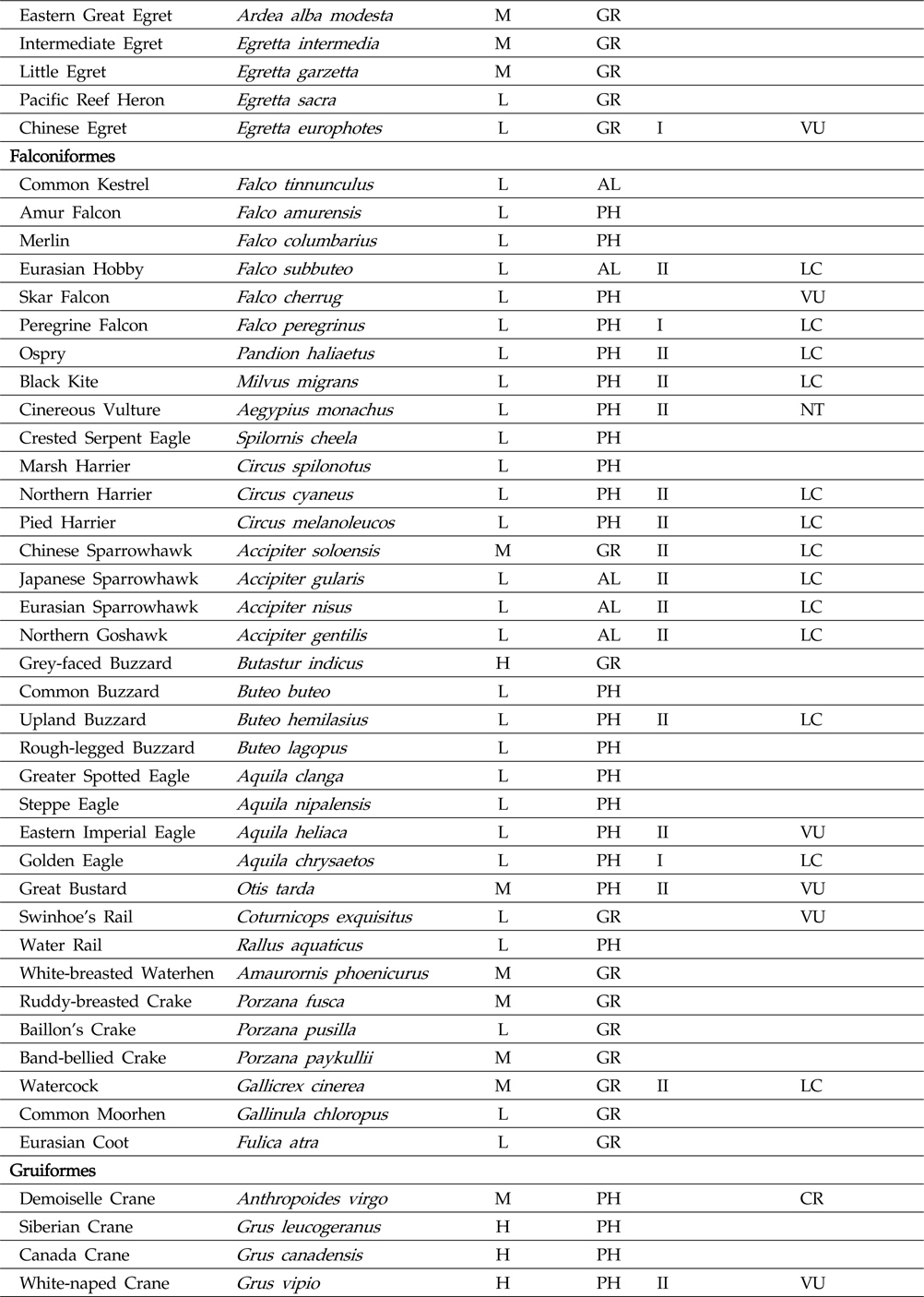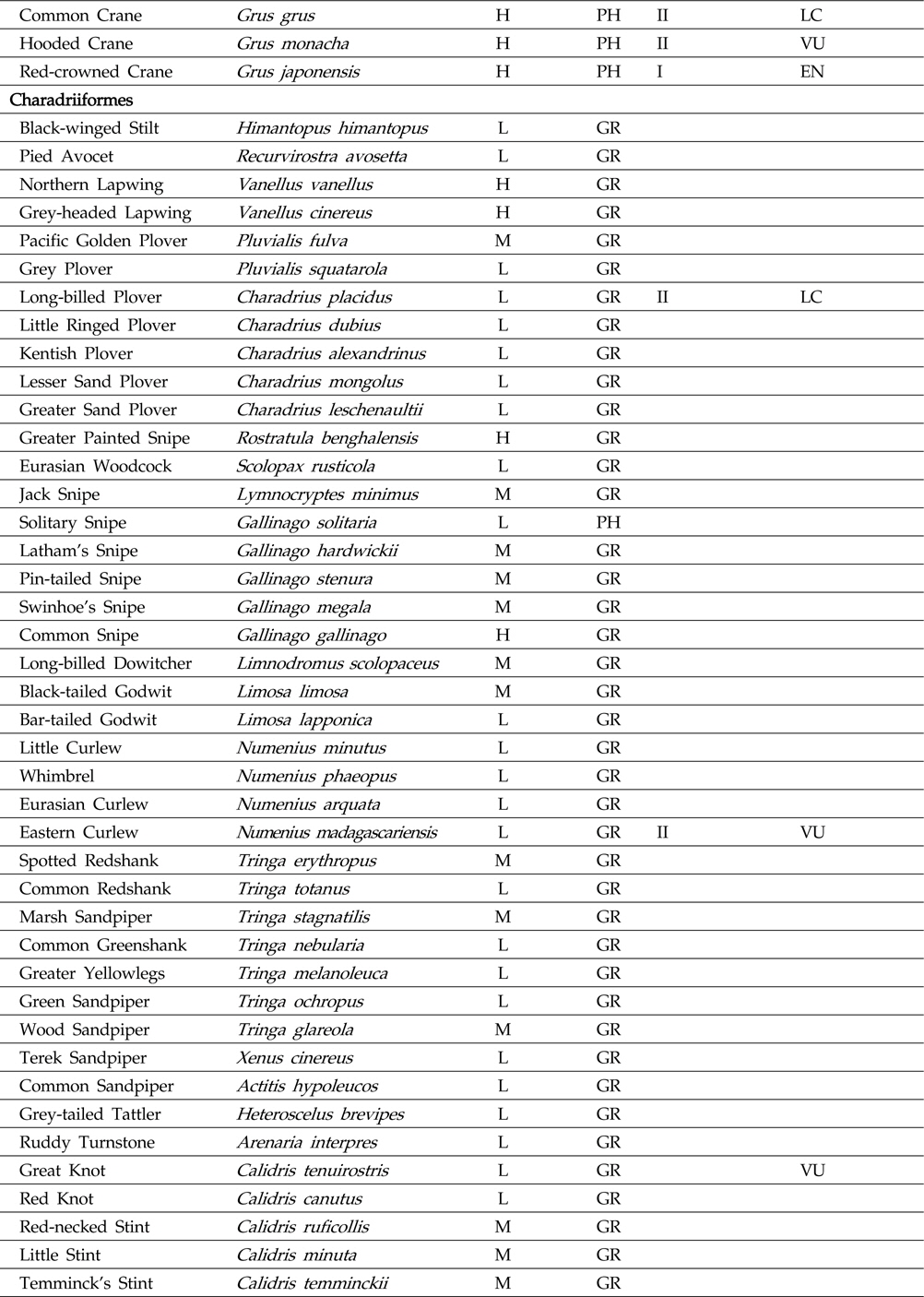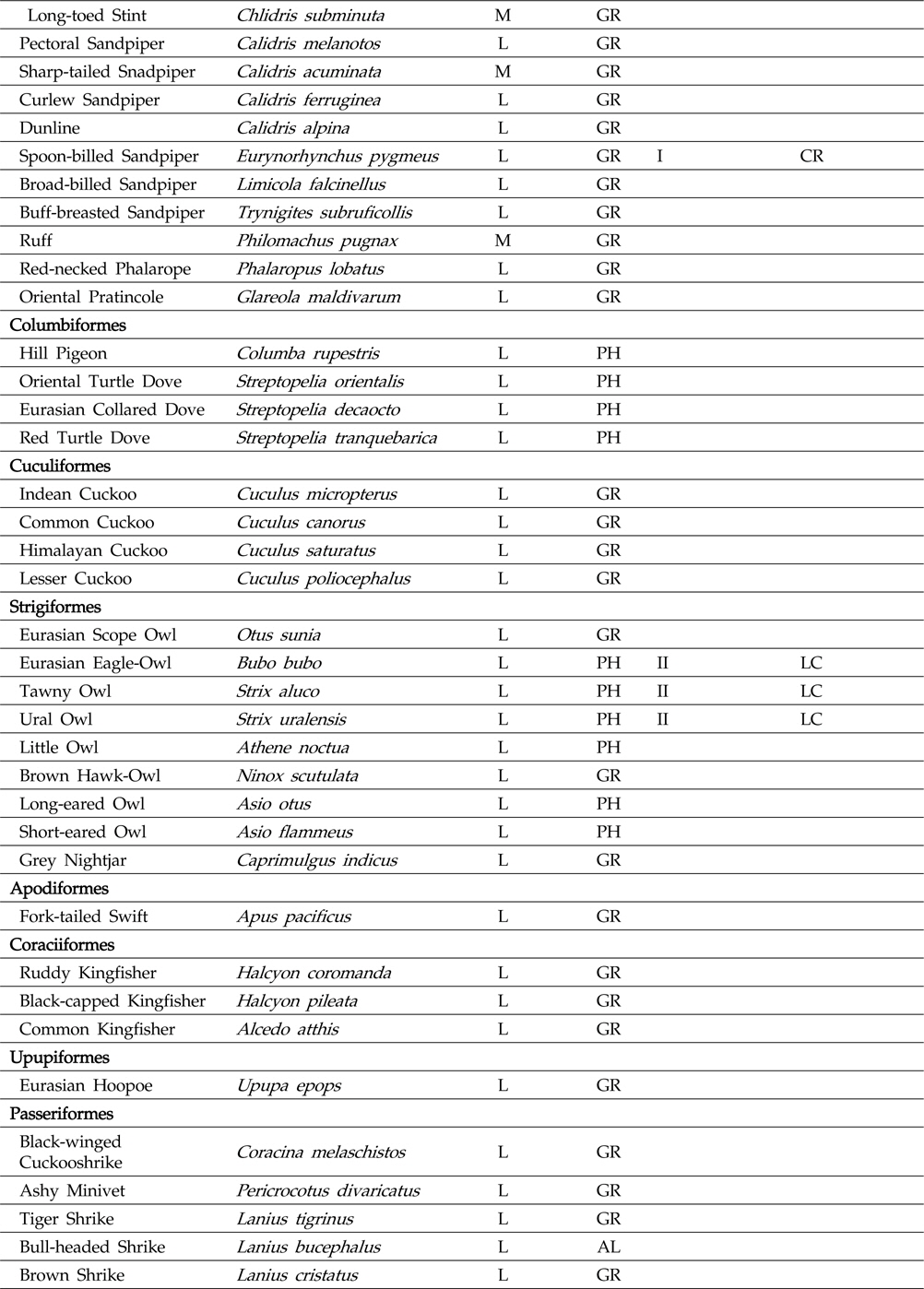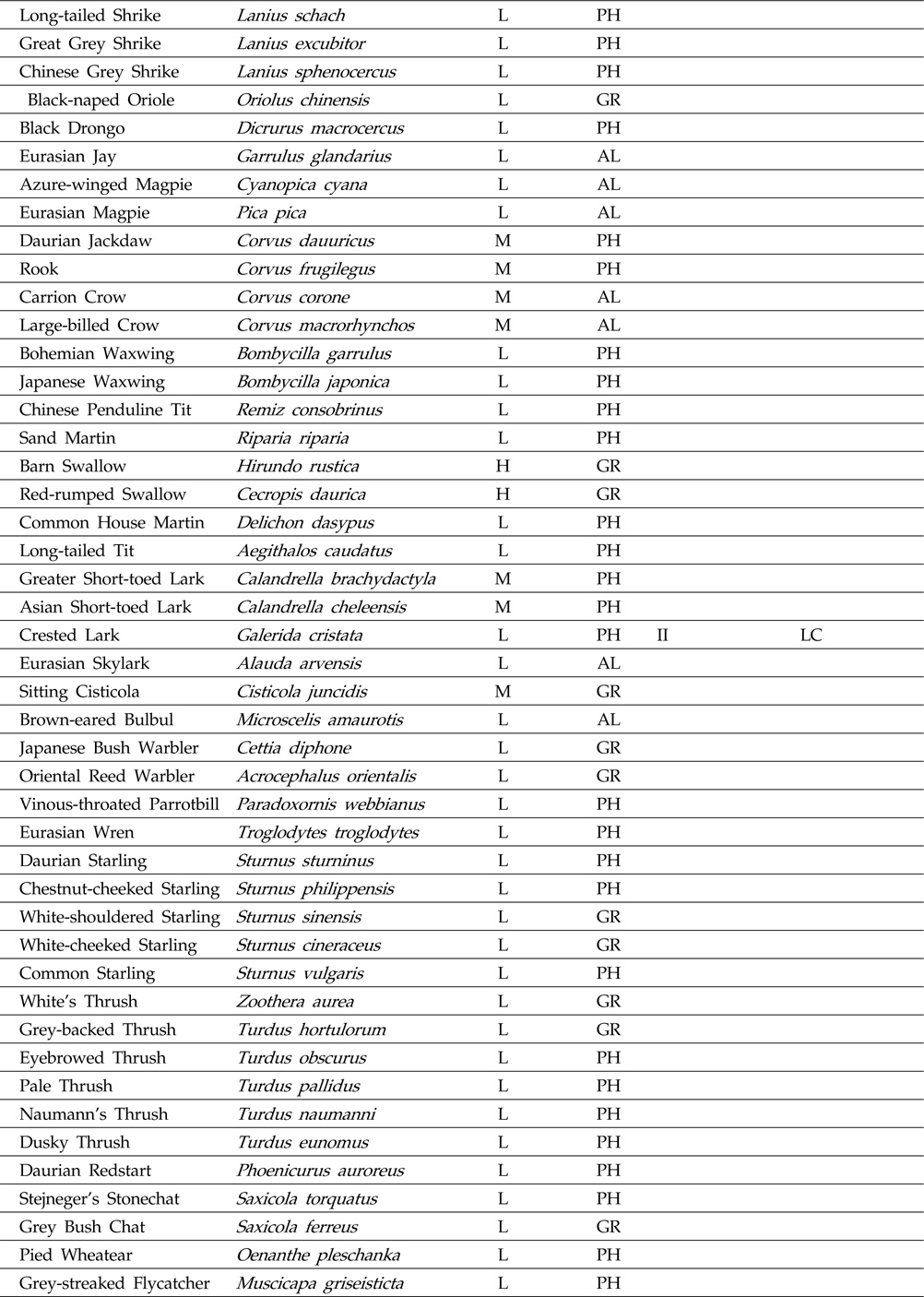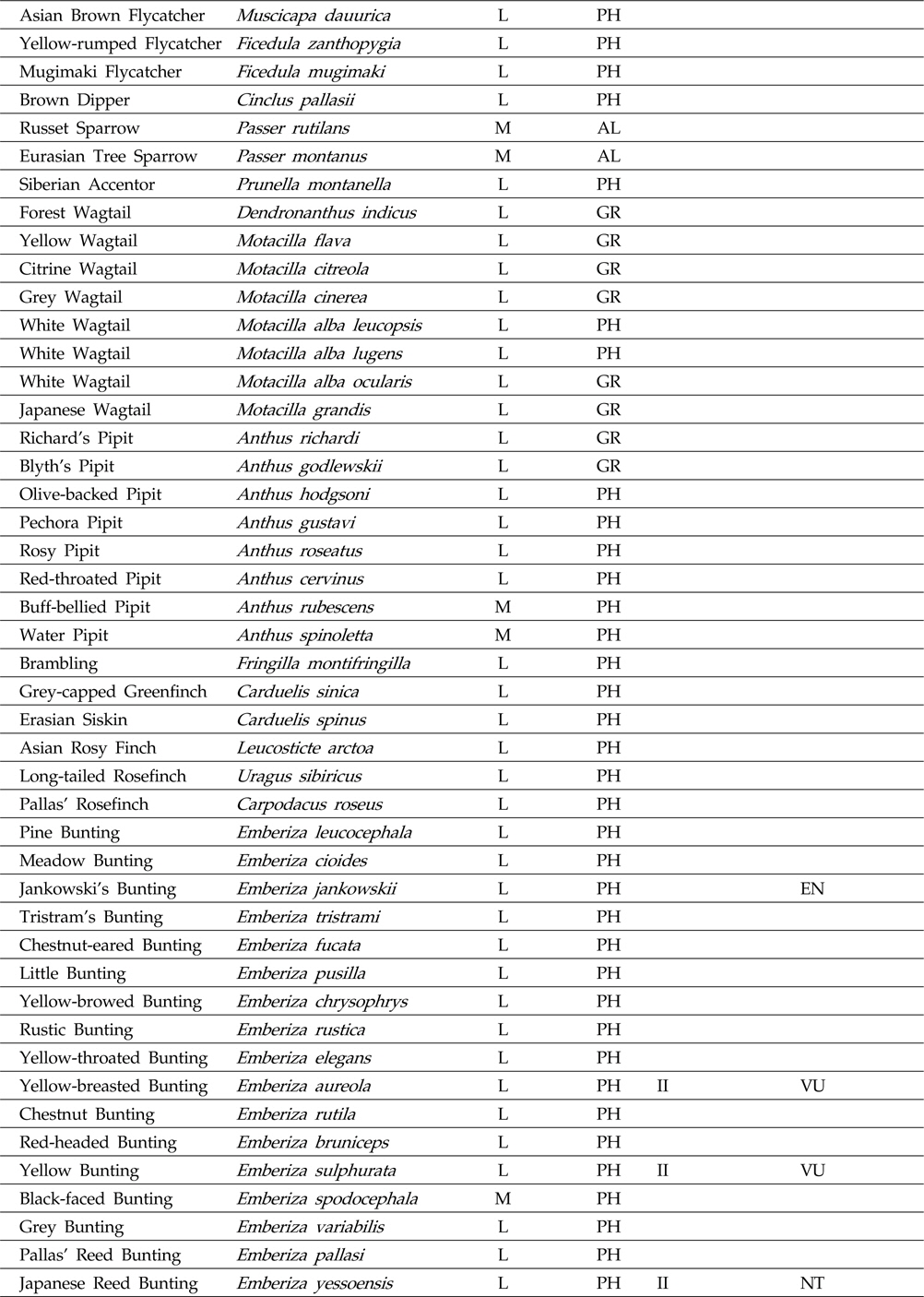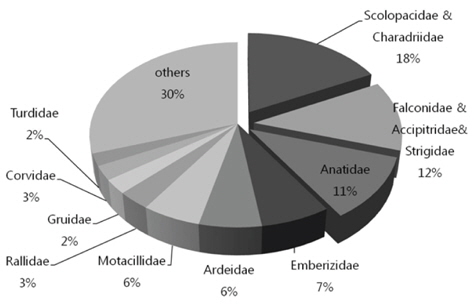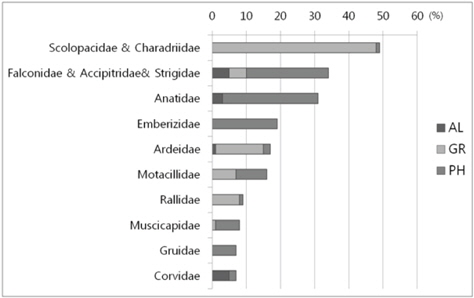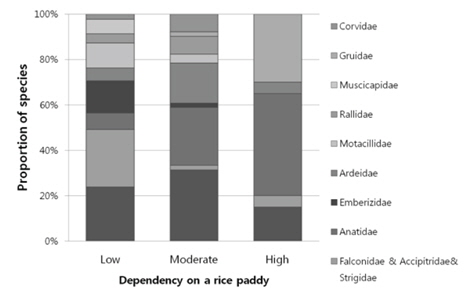



Rice paddies not only produce food but also provides wildlife habitats. Although more than half agricultural land of South Korea is rice paddy, a few studies have been conducted in rice paddy ecosystem. We investigated a status of bird using a rice paddy in South Korea using published data.
Birds using a rice paddy have been defined as birds which breed, rest or forage on rice paddy, bank, reservoirs or irrigation ditches. According to the publication from 1980s, birds using a rice paddy were total 47 families 279 species. Scolopacidae and Charadriidae (18%), Falconidae, Accipitridae and Strigidae (12%) and Anatidae (11%) used a rice paddy. Half of bird species using a rice paddy visited a dried rice paddy during the winter and 39.4% of them used a flooded rice paddy in spring, autumn or summer. Dependency on a rice paddy was high in ducks, egrets, cranes, and shorebirds. Population of dabbling ducks has decreased for last 12 years while cranes have increased.
Rice paddies provide both migratory and terrestrial birds including endangered species for habitate all through the year in Korea.
논은 식량자원을 생산하는 농경지의 역할 뿐만 아니라 생물다양성 증진을 위한 가치로도 주목 받고 있다(Elphick, 2010).벼가 자라는 동안 담수 되는 논은 습지에 서식하는 다양한 수서생물(Han
우리나라의 논 이용 조류 현황은 1960년대부터 출간된 국내외 학회지, 도감과 서적 등을 참고하였다. 종목록은 한국조류학회의 조류목록을 기준으로 하였다(The Ornithological Society of Korea, 2010). 논 이용 조류의 범위는 전국의 논, 논둑, 논 주변의 저수지, 수로에서 번식하거나 취식, 휴식을 하는 종으로 제한하였으며 시기적으로는 연중뿐만 아니라 특정기간(번식, 월동, 통과기) 동안에 논에서 관찰되는 종을 모두 포함하였다. 논에 서식하는 조류 목록을 토대로 조류의 논 이용시기와 논 의존도, 보호종 여부 등을 살펴보았다. 논의 의존도는 Fujioka 등(2010)의 분류를 따랐으며 Won과 Kim(2012), Lee 등(2002)의 문헌자료를 참고로 하였다. 월동시기에 논에 의존하는 수조류의 개체군 변동은 국립환경과 학원과 국립생물자원관에서 매년 실시했던 겨울철 조류 동시센서스와 학술논문의 자료를 종합하여 분석하였다. 두루미류의 개체군 변동은 겨울철 조류동시센서스에서 2005년부터 2012년까지 철원평야, 연천, 임진강, 강화도, 낙동강하류, 남한강, 한강하구, 한강하류, 영종도, 아산호, 간월호, 장항해안, 유부도, 영암호, 동진강, 강진만, 여자만, 순천만, 사천만, 주남저수지, 우포, 황강, 구미 해평, 낙동강하구 등에서 수행된 자료를 대상으로 하였다. 겨울철 조류 동시센서스 자료는 논과 주변 서식지까지 포함하여 조사된 결과이므로 지역에 따라서는 갯벌에서 관찰한 개체도 일부 포함되어 있다.
국내외 문헌자료를 통해 논 습지에 서식하는 것으로 기록된 조류는 철새와 텃새를 합쳐서 총 47과 279종이었다(Fig. 1, Table 1). 논을 이용하는 조류종은 도요⋅물떼새과(49종, 18%)가 가장 많았고 그 다음으로는 매⋅수리⋅올빼미과를 포함하는 맹금류(34종, 12%), 오리과(31종, 11%), 멧새과(19종, 7%), 백로과(17종, 6%), 할미새과(16종, 6%)의 조류 순이었다. 그 외에 뜸부기과(9종), 솔딱새과(8종), 두루미과(7종), 지빠귀과(6종), 저어새과(4종), 제비과(4종) 조류 등이 있었다(Fig. 1).
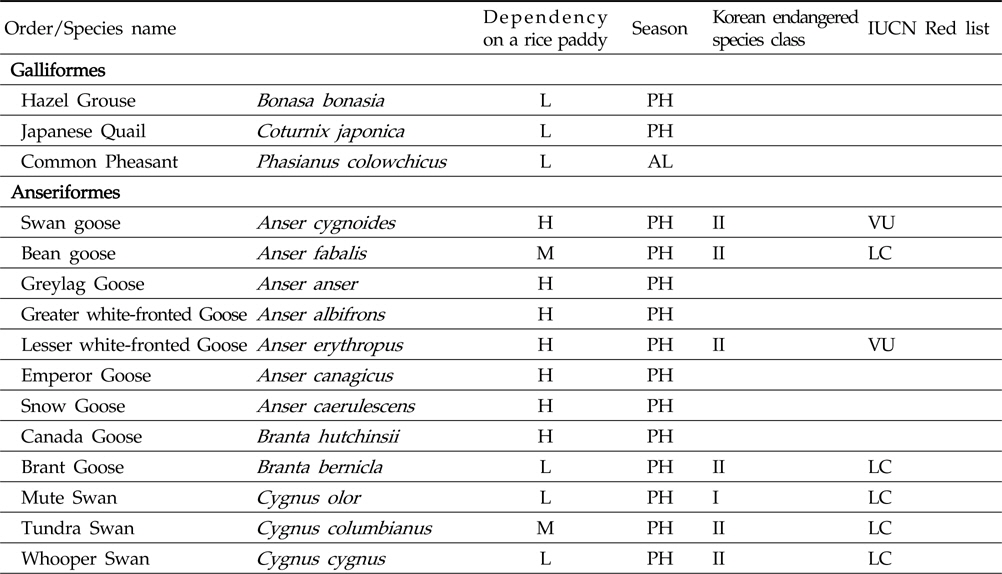
279 species (including subspecies) of birds using a rice paddy in South Korea (L: low; M: moderate; H: high; PH: post harvest season; AL: all year around; GR: rice growing season; I: Korean endangered birds Class I; II: Korean endangered bird Class II; EN: endangered; VU: vulnerable; CR: critically endangered; LC: least concern)
추수 후에 논에 도래하는 겨울철새가 52.0%로 가장 많았고, 벼가 자라는 동안 물이 있는 논에 도래하는 나그네새나 번식 종도 많은 비율(39.4%)을 차지했다. 논에 서식하는 조류의 먹이는 습답과 관개수로에 서식하는 어류와 수서무척추동물이며, 건답에서는 추수 후 낙곡으로 알려져 있다. 과(family)별로 시기적 논 이용을 살펴보면 도요⋅물떼새과, 백로과, 뜸부기과 조류의 경우 봄, 가을의 통과 시기나 여름 번식기에 물을 댄 논을 이용하였다. 장다리물떼새(
1999년부터 2012년까지 겨울철 동시센서스 결과에 따르면 청둥오리, 흰뺨검둥오리, 쇠오리, 고방오리 등 수면성 오리의 개체수가 전반적으로 감소한 것으로 나타났다(Choi
재두루미(
논에 서식하는 조류 중 보호종은 총 46종으로 환경부 지정 멸종위기야생동물(환경부령 제 457호 5월 31일 공포, 61종)의 75%가 논을 서식지로 이용하는 것이 확인되었다 (Table 1). IUCN Red List(IUCN, 2012)에 기재되어 있는 멸종위기종(CR, EN, VU) 중에서 논에서 관찰된 조류는 총 21종이었다. 멸종위기야생동물 I급이면서 IUCN Red List에서도 위기종으로 분류된 종은 두루미, 황새(

